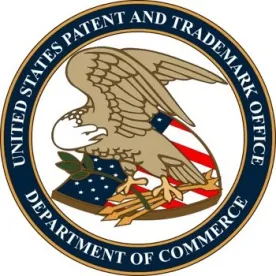Confronting a life sciences patentee with its statements to regulatory bodies (such as the FDA) is a textbook defense strategy in patent litigation. After all, communications with regulatory bodies are often performed by non-attorneys who may not appreciate the consequences of their statements in future litigation. And while in ideal circumstances the patentee’s attorneys will ensure accurate and consistent communications and try to put potentially inconsistent statements in context, it is not always possible to do so once the genie is out of the bottle. Belcher Pharmaceuticals, LLC v. Hospira, Inc., exemplifies the dire consequences that can result from inconsistent communications with regulators—particularly if a defendant can point to a single source for those communications.
According to the decision, Belcher made an “about-face” to the United States Patent Office (“PTO”) after submitting a New Drug Application (“NDA”) related to a proposed l-epinephrine formulation. For example, in order to expedite FDA approval for its NDA, Belcher represented that its formulation merely removed “preservatives and sulfides” and resulted in a composition having a pH range of 2.8 to 3.3. The NDA called the process for obtaining this pH range “old,” and Belcher submitted batches from a reference product by Sintetica having a pH range of 3.1 to 3.3. Notwithstanding this representation, Belcher later sought to patent a formulation having an in-process pH of 2.8 to 3.3. When the PTO rejected the claim based on prior art having a pH range of 2.2 to 5.0, Belcher successfully argued that the claimed range of 2.8 to 3.3 was “unexpectedly found to be critical” to the invention and therefore different from the prior art. The PTO then granted Belcher’s patent (the “’197 Patent”).
Belcher then sued Hospira for patent infringement. As part of its defense, Hospira relied on Belcher’s inconsistent statements to the FDA and PTO to argue unenforceability of the ’197 Patent due to inequitable conduct. Hospira prevailed on this defense largely due to the testimony of Belcher’s Chief Science Officer (“CSO”), who confirmed he was involved in both drafting the NDA and responding to the PTO’s questions during prosecution. Specifically, the district court found “he knew of Sintetica’s epinephrine formulations that had a pH range of 2.8 to 3.3 and that Belcher’s NDA described that range as ‘old’” and “did not merely withhold this information [from the PTO] but also used emphatic language to argue that the claimed pH range of 2.8 to 3.3 was a ‘critical’ innovation” that produced unexpected results.
The Federal Circuit affirmed, noting that inequitable conduct requires a defendant to “establish both the materiality of the withheld reference and the applicant’s intent to deceive the PTO.” As to “materiality,” Belcher did not dispute that the withheld information disclosed the claimed pH range, and therefore the Federal Circuit found materiality “necessarily” met. Belcher, however, argued that the withheld information was merely “cumulative” of information in the PTO’s possession. The Federal Circuit rejected this argument as “directly at odds with [Belcher’s] argument during prosecution that the claimed range was ‘critical.’”
As to “deceptive intent,” the Federal Circuit found no “direct evidence” of a “specific intent to deceive the PTO . . . .” Indeed, Belcher’s CSO testified that he believed the omitted information to be irrelevant because “they were different from the asserted claims in certain respects . . . .” Had the district court merely rejected Belcher’s argument on credibility grounds, the Federal Circuit indicated that there would have been an insufficient basis to uphold the ruling. However, because of the CSO’s “central role in both FDA approval and patent prosecution, and his arguments to the examiner about the ‘criticality’ of the 2.8 to 3.3 pH range despite knowing that Sintetica’s batches used the same range,” the Federal Circuit found sufficient evidence to affirm the district court.
This decision emphasizes the importance of coordinating the efforts of patent attorneys during the FDA approval and patent prosecution processes. According to the Federal Circuit, while Belcher’s CSO held degrees in medical sciences and business and had responsibilities for “intellectual property matters including patent application drafting,” he was not a registered patent agent or an attorney. Had Belcher synched its representations to FDA and the PTO, Hospira would have been hard pressed to prove the intent prong for inequitable conduct in view of the court’s finding that there was no direct evidence that Belcher specifically intended to deceive the PTO.
The case is Belcher Pharms., LLC v. Hospira, Inc., No. 20-1799




 />i
/>i

